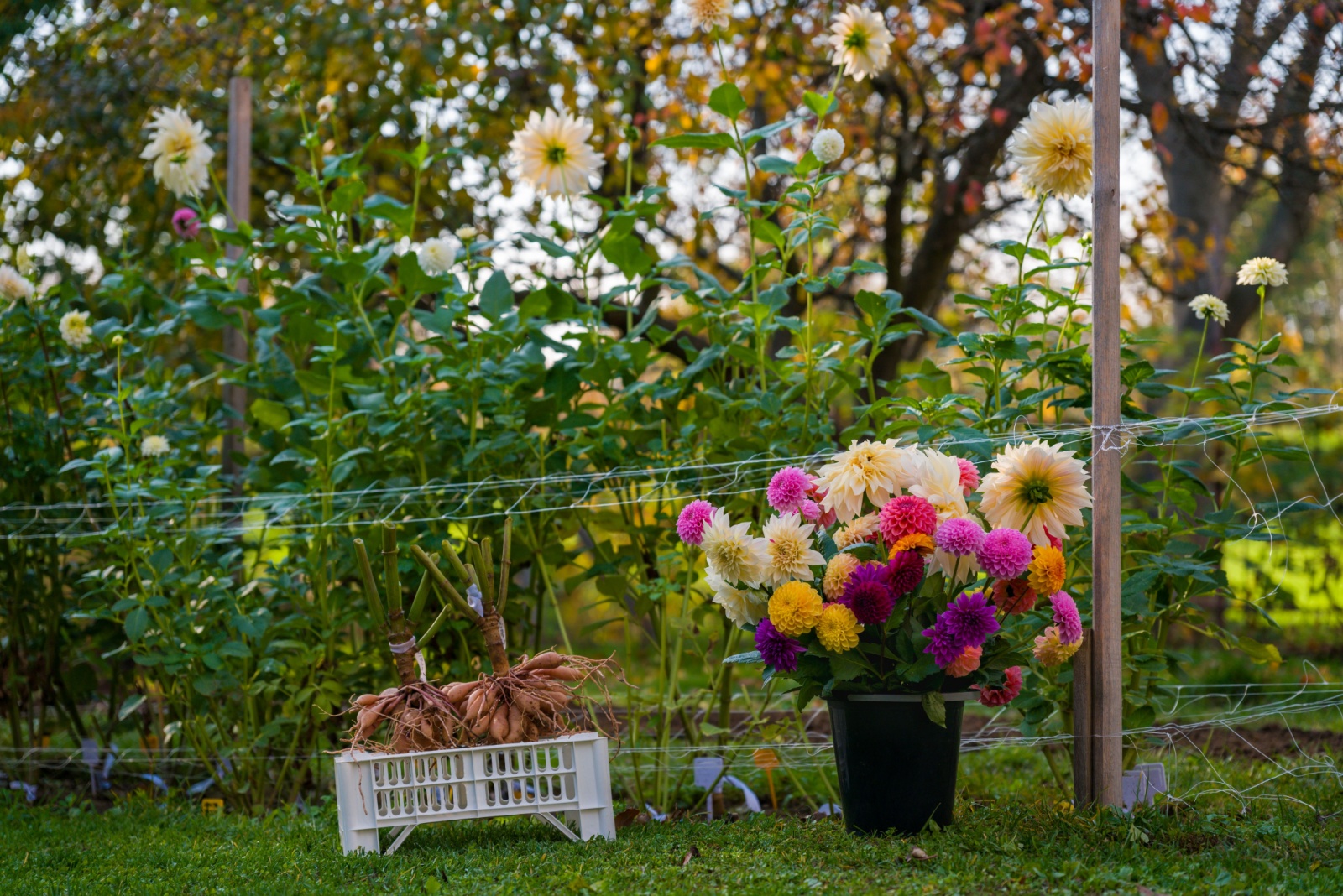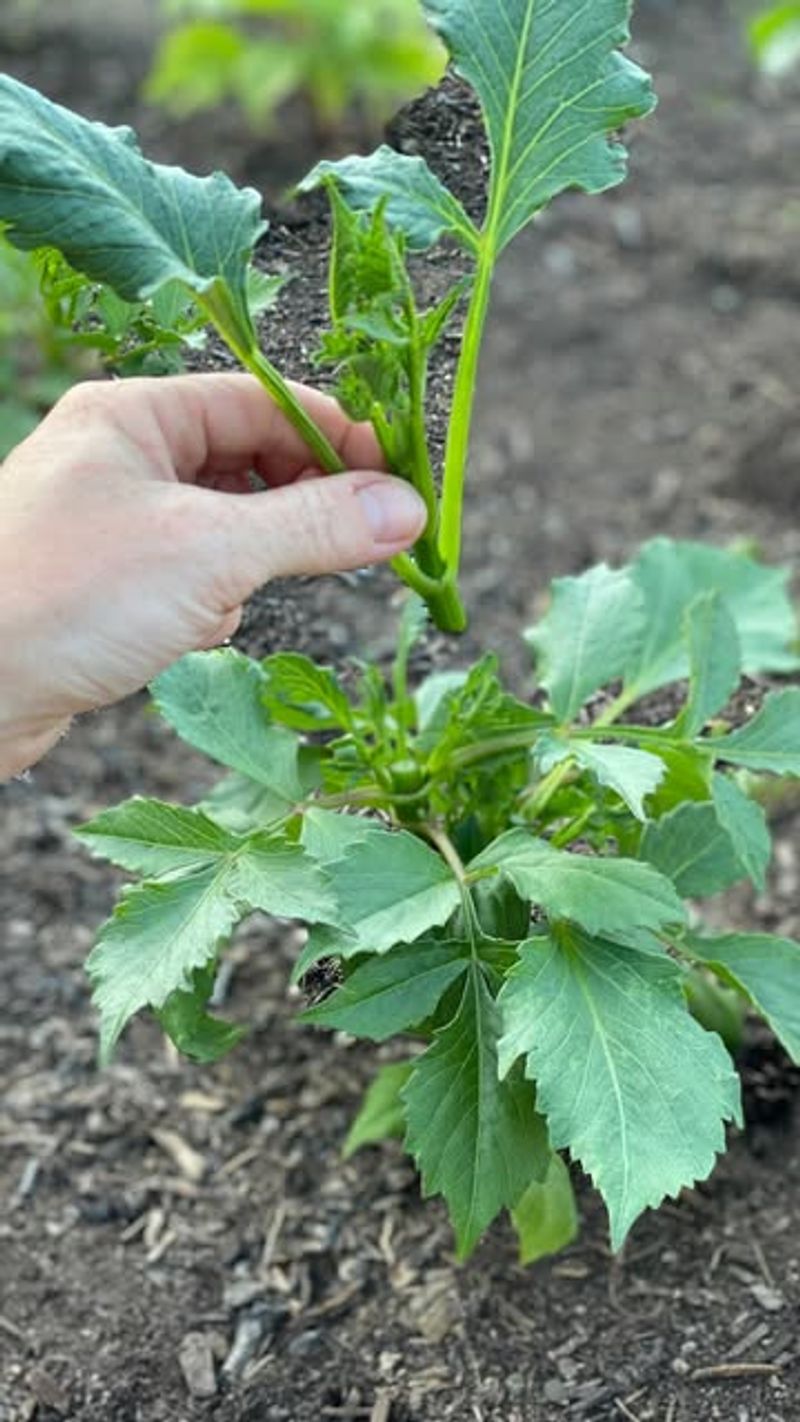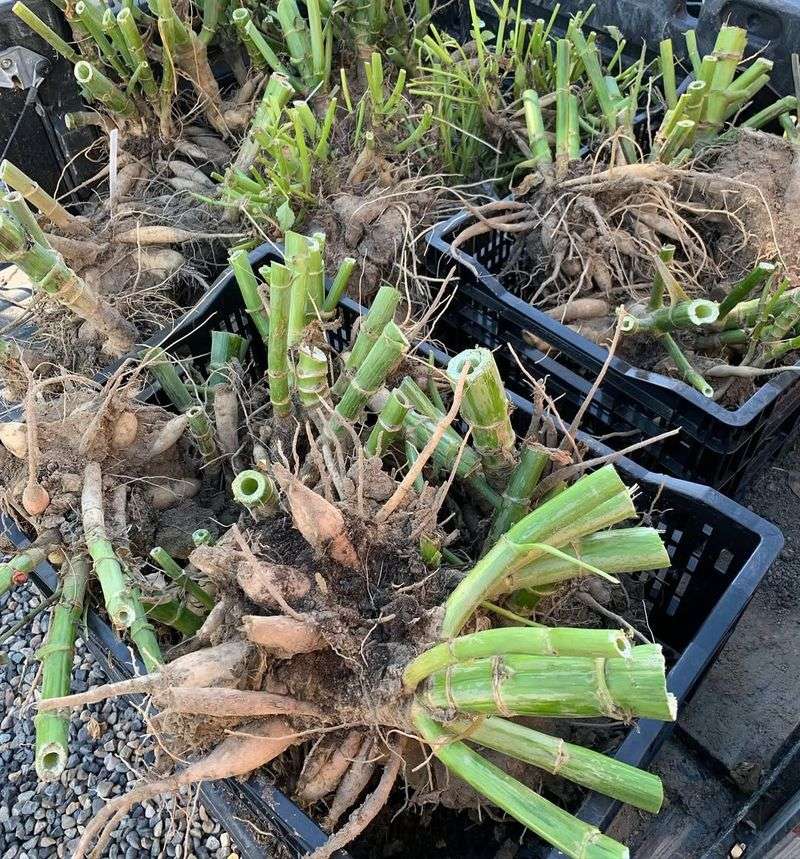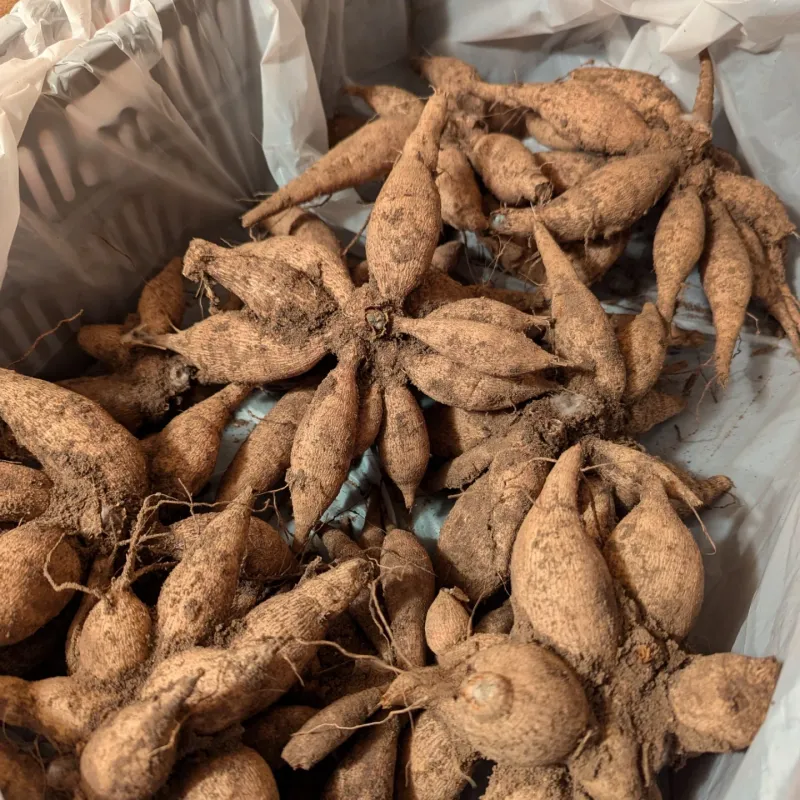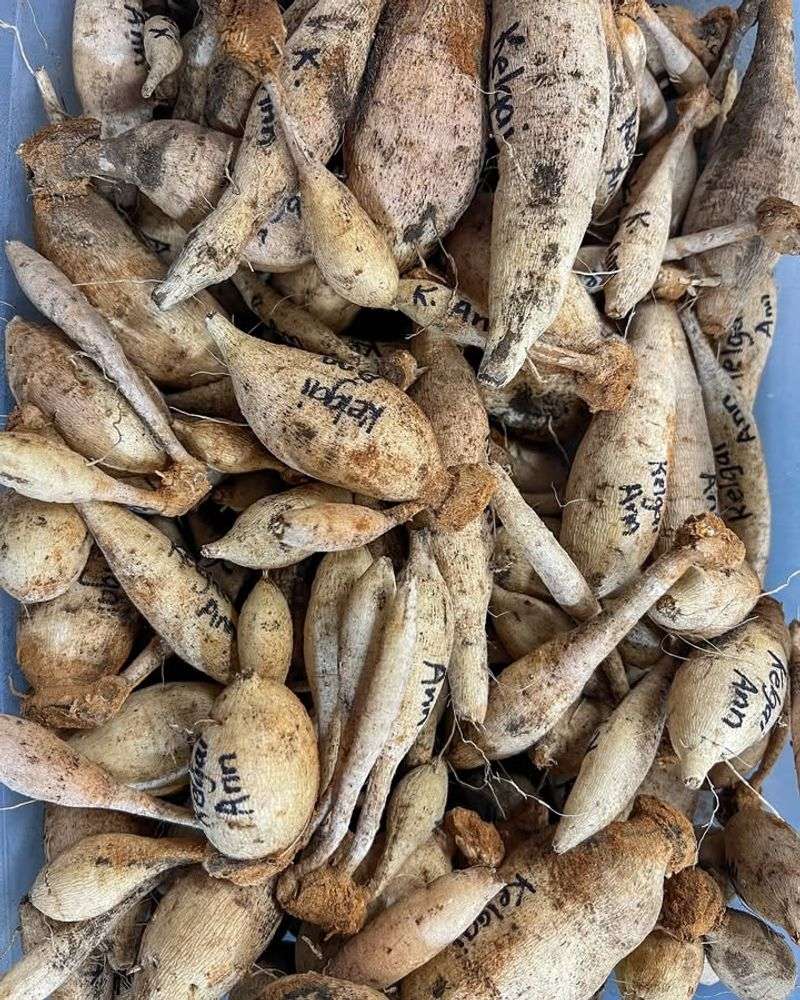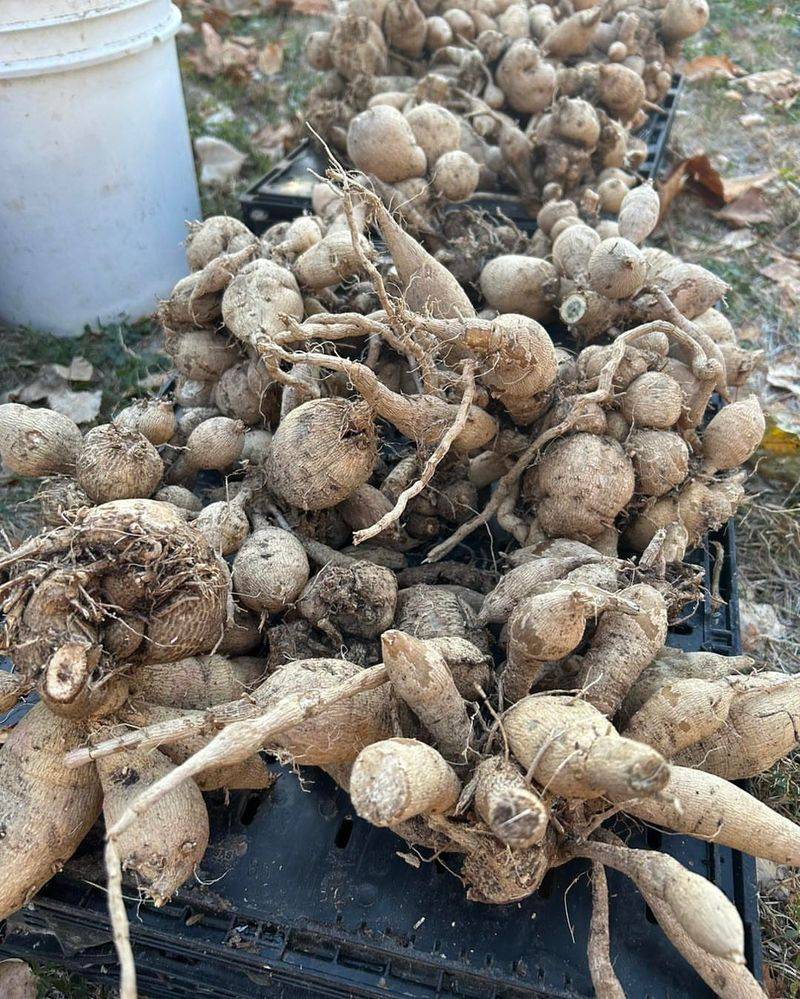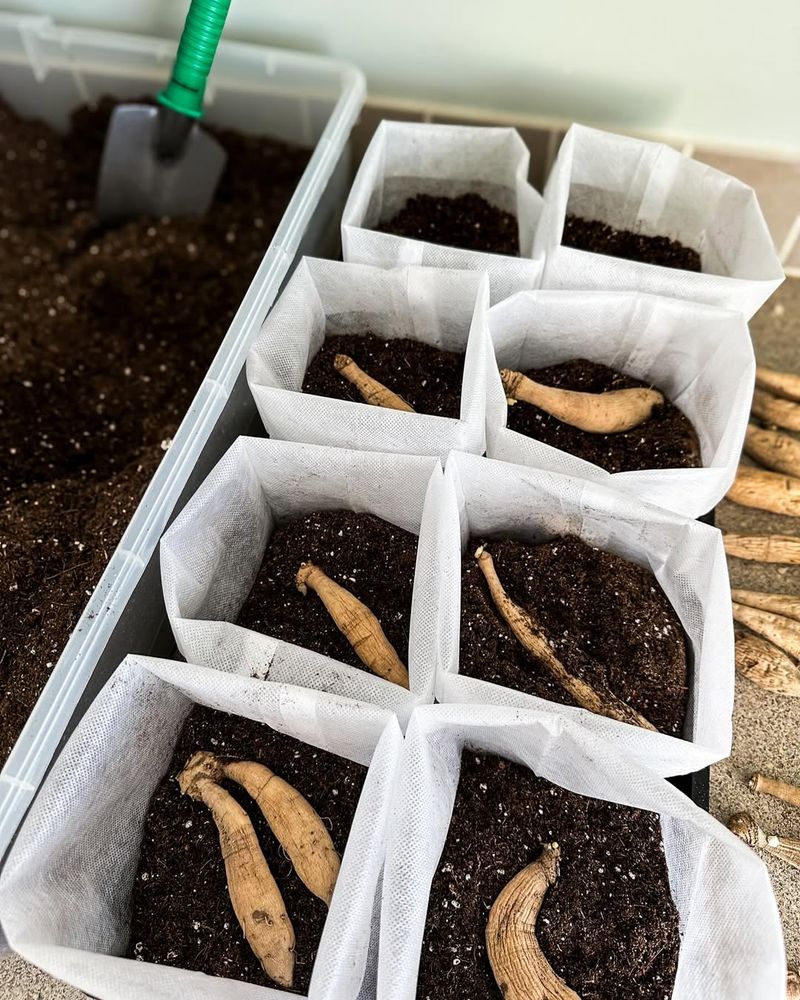Michigan gardeners have mastered a special technique for growing spectacular dahlias year after year, despite our challenging winters. This trick involves properly digging up and storing dahlia tubers during the cold months.
Knowing how to handle these beautiful flowers can mean the difference between a stunning garden next fall or starting from scratch with new plants.
1. Wait For The First Frost Signal
Patience pays off when preparing dahlias for winter storage. After the first light frost has blackened the foliage, your dahlias are sending energy down to their tubers.
Michigan gardeners mark their calendars for this crucial timing window, usually in mid-October. Rushing this step might leave you with immature tubers that won’t survive winter, while waiting too long risks freezing damage to these precious underground treasures.
2. Cutting Back Stems Creates Stronger Plants
Grab your pruning shears and cut those dahlia stems about 4-6 inches above the ground. The remaining stub serves as a helpful handle when it’s time to dig up the tubers.
Many Michigan gardeners label each plant now – not later – when varieties and colors are still fresh in their minds. A simple plant marker pushed into the soil saves confusion during spring replanting, ensuring your garden design stays exactly as planned.
3. Digging Technique Prevents Tuber Damage
Carefully work a garden fork into the soil about a foot away from the stem. Gently lift from multiple angles to loosen the root ball without piercing those precious tubers.
Michigan’s clay-heavy soils can make this job tricky. Experienced gardeners choose a dry day after rainfall for easier digging. Shake off excess soil but don’t wash tubers yet – a thin protective layer of dirt actually helps prevent drying out during storage.
4. Division Creates Dahlia Multiplication Magic
Look at what one dahlia became! A cluster of connected tubers will greet you, each capable of becoming a new plant next year. With a sharp, clean knife, separate the clump, ensuring each division has both a piece of stem (the crown) and at least one tuber.
Michigan’s top dahlia growers mark the eyes – those tiny pink bumps where next year’s sprouts will emerge. No eyes means no growth, so inspect carefully before dividing.
5. Curing Process Extends Storage Life
Freshly dug tubers need a healing period before winter hibernation. Spread them in a single layer in a cool, dry place with good air circulation for about a week.
Michigan basement temperatures – around 50-60°F – create perfect curing conditions. During this time, any nicks or cuts will form protective calluses. Garden veterans check tubers halfway through curing, discarding any that show signs of rot or damage.
6. Storage Medium Prevents Fatal Drying Out
Vermiculite, peat moss, or wood shavings become winter blankets for sleeping dahlias. Layer these materials in plastic bins or paper bags, nestling each tuber so it doesn’t touch its neighbors.
The Michigan winter storage trick? Maintaining just enough moisture to prevent shriveling without encouraging rot. Some clever gardeners mist their storage medium lightly every few weeks with a spray bottle. Check monthly, removing any tubers that develop soft spots.
7. Early Spring Wake-Up Call Guarantees Blooms
Michigan’s dahlia secret weapon is starting tubers indoors in April, about 4-6 weeks before the last frost. Plant them in containers with potting mix, keeping just the top of the tuber exposed.
Bright, indirect light encourages strong growth without stretching. When sprouts reach 6 inches tall, many gardeners pinch the top growth to encourage bushier plants. By planting time in late May, you’ll have robust young plants ready to produce flowers weeks earlier than directly planted tubers.

